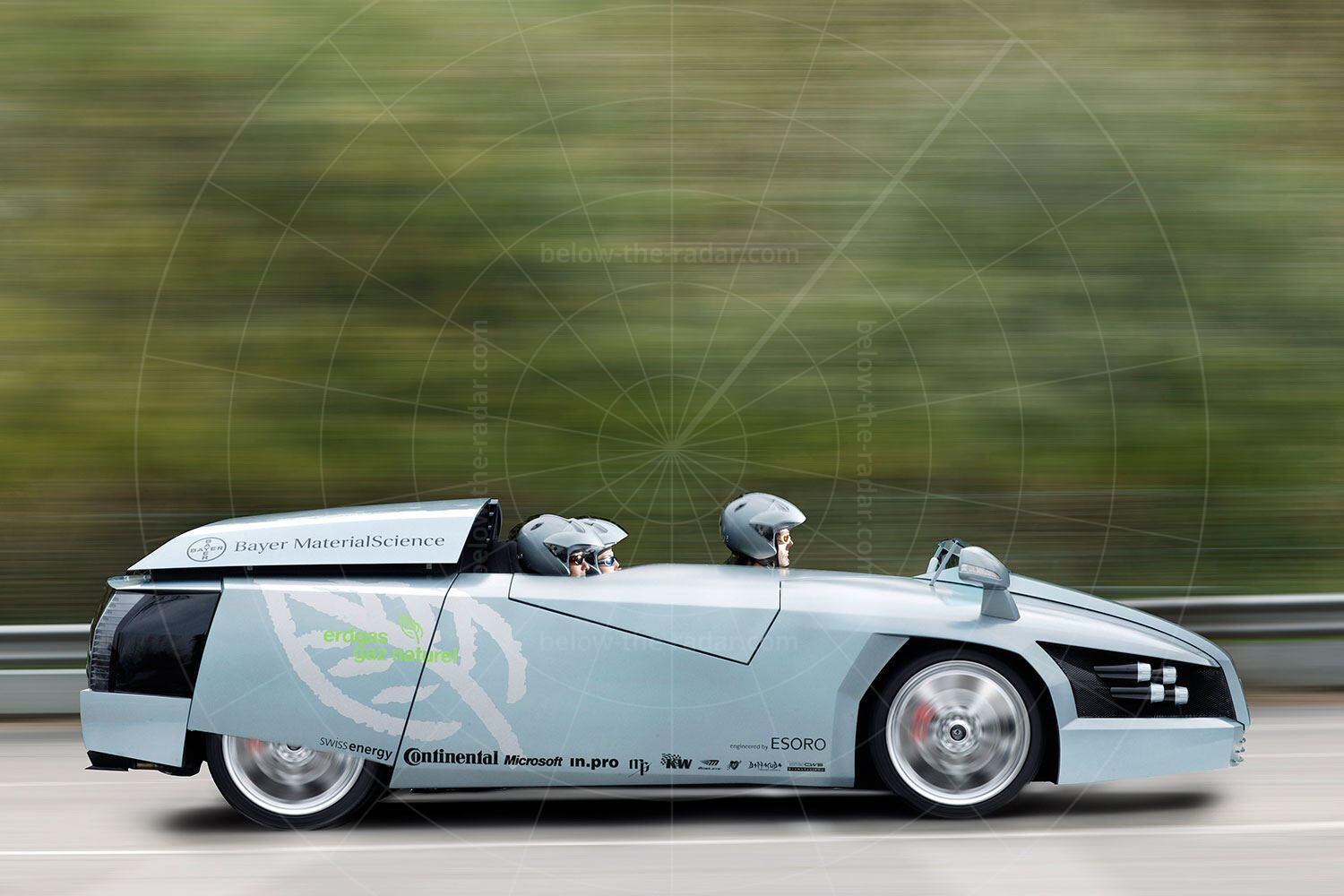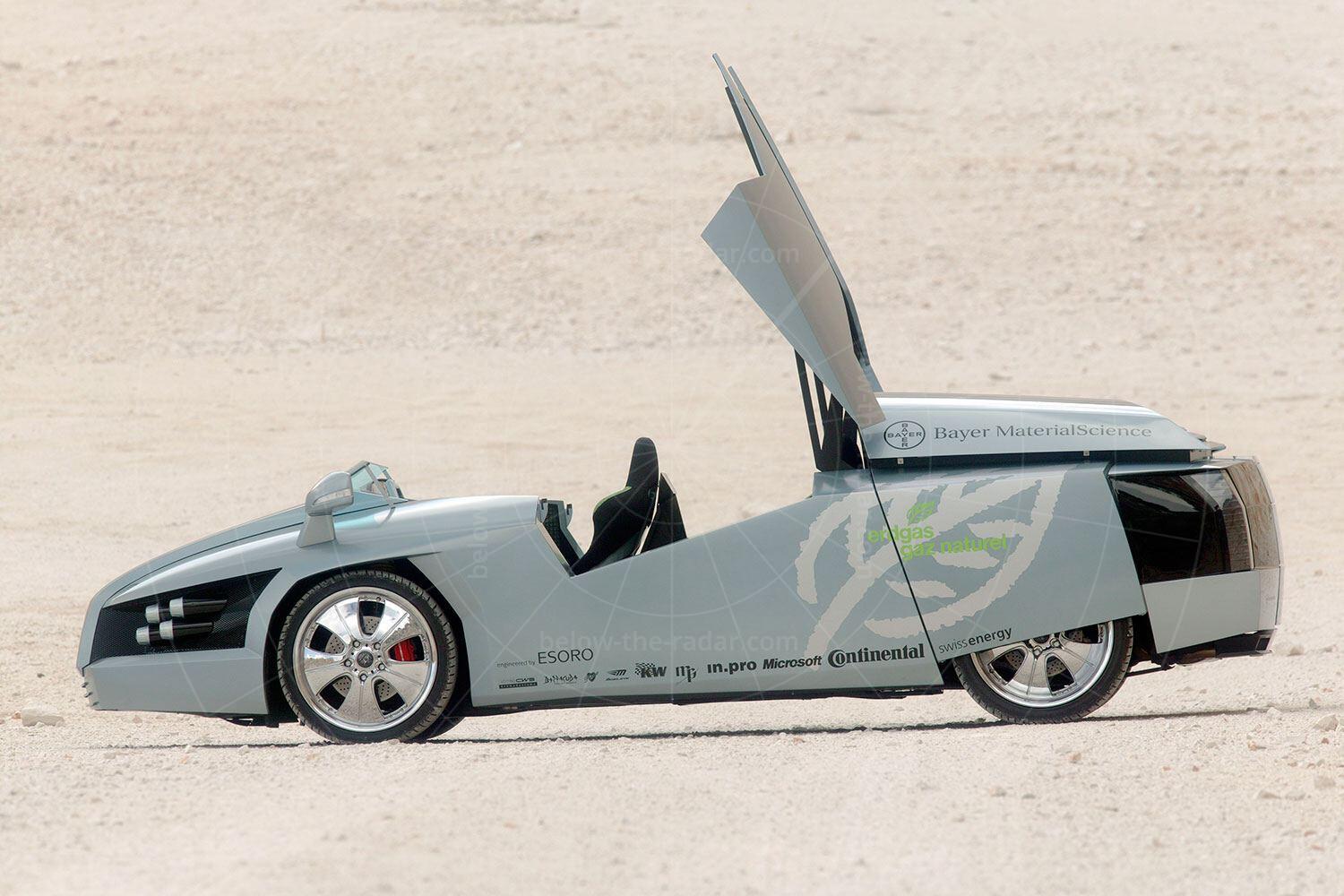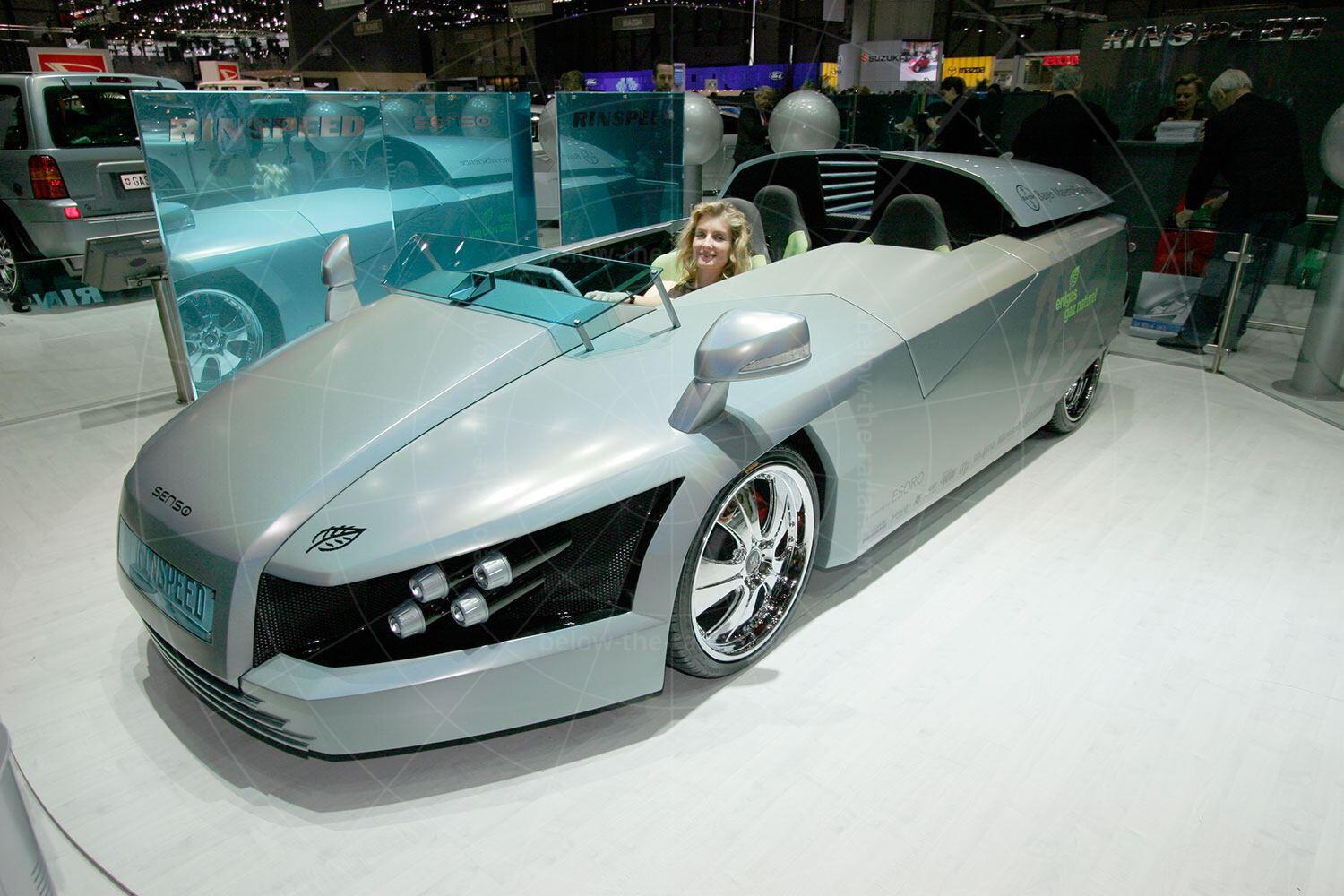Swiss eccentric Frank Rinderknecht set up Rinspeed in the late 1970s to import sunroofs from the US, but it wasn’t long before he was tuning BMWs, Porsches and Volkswagens. In the 1980s it was Rinspeed that was creating some of the most outrageous machines around, especially some of his Porsches that mixed 911 bodyshells with 928 elements.
By the end of the 20th century though, Rinspeed had started to come up with the most bonkers concept cars anywhere. For years, Rinderknecht could be relied upon to produce something utterly crazy for the annual spring Geneva motor show. He’s done it all; SUVs on steroids, electric city cars, sub-aqua sports cars; nothing is off Rinderknecht’s radar.
So when the Senso was unveiled at the 2005 Geneva motor show it didn’t seem quite as barking mad as it might have done; sure it looked a bit odd, but we’d seem some far more bizarre creations emerge from the Rinspeed workshops. However, the technology packed within the Senso was nothing less than from another planet. Indeed, most who saw it just couldn’t see the point; here was a car which monitored its driver’s biometric data and adjusted various parameters to suit. As a result, its creator called this “the most sensuous car in the world” – something that Toyota may have taken issue with, thanks to the development of its Pod concept, which did much the same thing.
The Senso took into account the driver’s pulse and driving behaviour, then adjusted the music, interior lighting and even the fragrances to suit. As a result it could soothe a frustrated driver or pep up a tired one; Rinspeed didn’t say what it could do for a driver both frustrated and tired…
Despite its 3.2-litre Porsche Boxster petrol engine, the Senso was claimed to be green as it ran on natural gas, albeit rather a lot of it, no doubt. This sent its power to the rear wheels via a six-speed manual transmission. Indeed, aside from the natural gas element, the Senso was disappointingly conventional in its drivetrain.
One neat touch was the suspension, which was infinitely adjustable in terms of its ride height and stiffness, to provide the perfect ride/handling balance. The whole point of the Senso though (if it could be argued that there was a point…) was those driver’s biometric data sensors.
Inputs were courtesy of an elaborate system which consisted of a number of sensors that gathered data about the driver's condition. A biometric Polar watch measured the driver's pulse while a ‘Mobile Eye’ camera recorded their driving behaviour; how well and how often they changed lanes, along with how close and at what speed the Senso approached the cars in front. An on-board computer then evaluated the data to establish the driver's state of mind.
This in turn controlled four small liquid crystal displays which could emit stimulating (orange/yellow), relaxing (blue/violet) or neutral (green) color patterns into the driver's line of vision. As if this wasn’t enough, various fragrances could be pumped into the car through the air vents. Vanilla-mandarin was used for its calming effect, while citrus-grapefruit was there for stimulation.
Rinspeed has never worried too much about good looks or practicality, and nowhere was this more evident than with the Senso which looked awkward from most angles, and featured nothing in the way of protection from the elements.
Those exterior lines were inspired by industrial architecture; cue a bit of PR hype: “it creates a tension-filled dynamic between moving and non-moving objects. The two-part structure of the rear end is reminiscent of bold roof constructions and deep chasms between ranks of skyscrapers. The interplay between smooth curves and sharp edges evokes attractive industrial architecture.” Yeah, whatever…
Rinspeed called this a "no-nonsense" look; those who criticised it could easily have claimed it was more of a no-effort look. At least the bodywork was created entirely from recyclable composites while the windscreen was fashioned from polycarbonate, so it was much lighter than a conventional glass item, while it was also scratch-proof.
The interior was just as unconventional, and was also clearly inspired by industrial architecture too. In the centre of the Senso was the driver, who sat up front in the middle; behind was a pair of seats, making this a three-seater, just like the McLaren F1. But sadly for any would-be Senso buyers, that’s just about the only thing this Rinspeed oddball had in common with the supercar great.
| Vital statistics | |
|---|---|
| Debut | Geneva 2005 |
| Engine | Mid-mounted, 3179cc, flat-six |
| Transmission | 6-speed manual, rear-wheel drive |
| Power | 250bhp |
| Torque | 221lb ft |
| Top speed | 155mph |
| 0-62mph | 5.9 seconds |







































